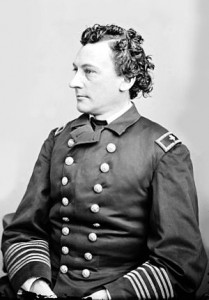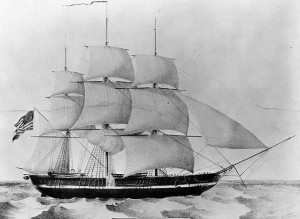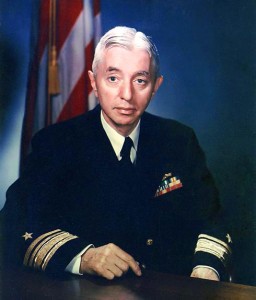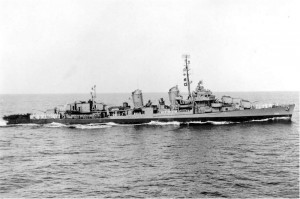From The New-York Times March 27, 1861 (The New York Times Archive):
The Engineer-in-Chief of the Navy.
The appointment of BENJ. F. ISHERWOOD to be Engineer-in-Chief of the Navy gives very marked satisfaction to those in the service. He is a native of this City, and was educated for the profession of civil engineer, which he practiced before entering the Engineer corps of the Navy — having been employed as an assistant upon the Croton water-works, the Erie, and the Albany and Schenectady Railroads. After the completion of the latter road, he published a work giving a complete description of its bridges. This, was very favorably received in Great Britain, where it was considered as the best publication then extant regarding the American system of wooden bridges.
Mr. ISHERWOOD entered the Navy as a First Assistant Engineer in 1844, and was promoted to the grade of Chief in 1848, the duties of which position he has since Discharged with marked ability.
Under the direction of the Navy Department, Mr. ISHERWOOD has spent much of his time in the investigation of subjects in the line of his profession, which were but partially understood, and his experiments have evolved many facts of great practical importance. He has also had a wide experience in the management of the machinery of our war steamers, his last cruise having been in the steam-frigate San Jacinto, in the China seas. Since his return in August, 1858, he has been engaged in a series of experiments, the most interesting and important of which have been detailed in Engineering Experiments, a work published by Mr. ISHERWOOD, which has been received with much favor in this country and in Europe. …
Benjamin F. Isherwood wrote Engineering Precedents For Steam Machinery, which was published in 1858. He helped found the Bureau of Steam Engineering in 1862. Isherwood and the use of steam power in the Civil war were very important according to Admiral Hyman Rickover (quote at the Bureau of Steam Engineering link):
Engineering, both in operating the shipboard machinery and in the design and construction of ships, became critically important with the outbreak of the Civil War. The Navy had to blockade a ‘coastline stretching over 3, 000 miles from the Potomac to the Mexican border. It had to support the Army on the rivers; it had to search out and destroy Confederate raiders. For all these purposes, the steam engine and the engineer were indispensable. On the day of battle, steam engines drove the Monitor and the Merrimack, the Kearsarge and the Alabama, as well as the gunboats which supported Grant before Fort Donelson and Vicksburg. In 1862, Congress recognized the importance of engineering by creating the Bureau of Steam Engineering.
When Lee surrendered, the United States Navy was the most effective sea power in the world. That position depended upon engineering which, in turn, was based on the skill of Benjamin F. Isherwood, first Chief of the Bureau of Steam Engineering. He designed and built engines rugged enough to withstand the shock of combat, as well as ill-treatment by poorly trained operating engineers. He also designed and constructed a well-armed cruiser which was faster than any abroad. In addition, American naval leadership rested upon ingenious civilian engineers and inventors such as John Ericsson, who designed and built the Monitor.
From the Wikipedia article about Isherwood:
When the Civil War began, the Navy had 28 steam vessels, and during the war, the number grew to 600. Isherwood conducted the design and construction of the machinery necessary to accomplish this. He designed ships that were fast enough to pursue the blockade runners.
In 1863 and 1865, Isherwood published the first and second volumes of Experimental Researches in Steam Engineering, which were translated into six languages and became a standard engineering text upon which future steam experimentation was based.
Another technology with a huge impact on the Civil War.




